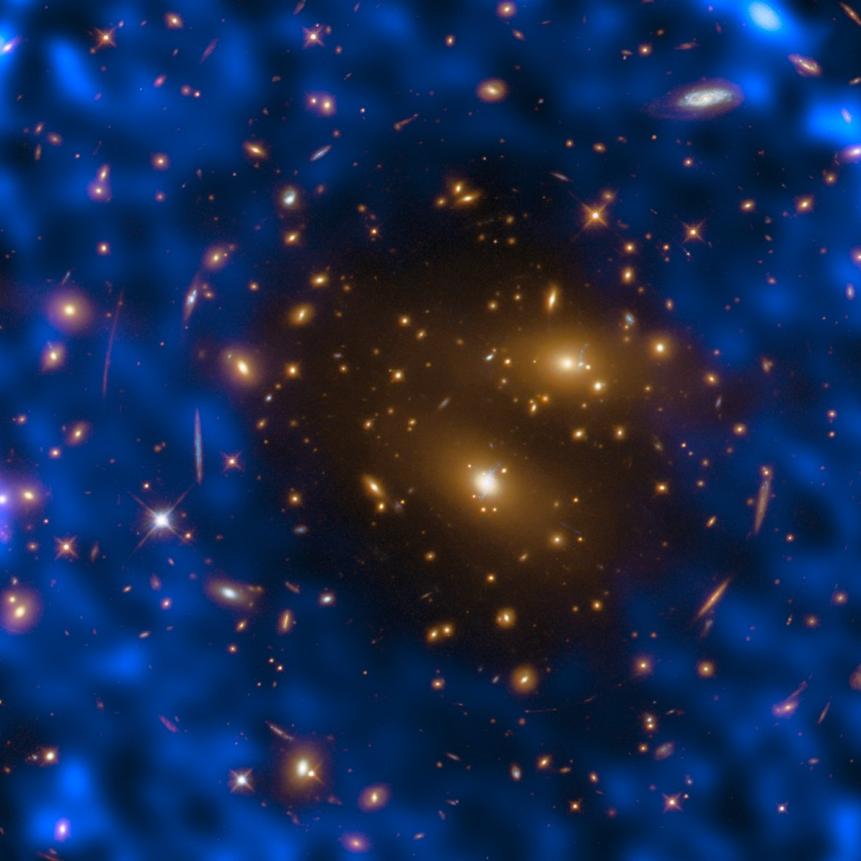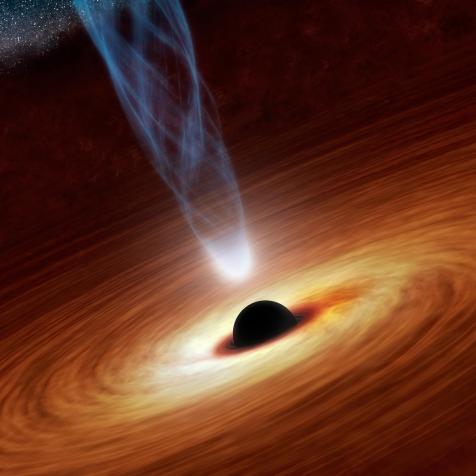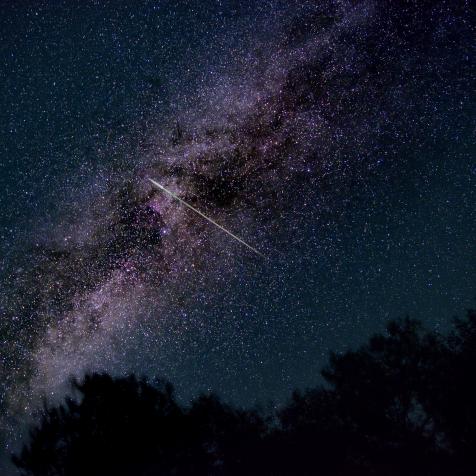
Eko Agung Wahyudi / EyeEm
What’s the Farthest Thing We Can See?

Beyond the most distant star you can see with the naked eye, beyond the most extreme faint galaxy that we discern with our telescopes, lays something extraordinary: the leftover light from the big bang itself.
And it’s everywhere.
The farthest object you can spot with your naked eye is actually a healthy distance away from us. If you find yourself enjoying a gorgeous dark sky, you can gaze at a fuzzy patch of light in the constellation Andromeda. Astronomers once thought that this fuzzy patch was just another nebula, but a hundred years ago Edwin Hubble discovered that it’s really an entire galaxy sitting two and a half million light-years away from us.
That’s an extreme distance for sure, but the combined light of the trillion-or-so stars within the galaxy allows you to see it, all the way from Earth.

ESA/Hubble & NASA, T. Kitayama (Toho University, Japan)/ESA/Hubble & NASA
The events surrounding the Big Bang were so cataclysmic that they left an indelible imprint on the fabric of the cosmos. We can detect these scars today by observing the oldest light in the Universe. As it was created nearly 14 billion years ago, this light — which exists now as weak microwave radiation and is thus named the cosmic microwave background (CMB) — has now expanded to permeate the entire cosmos, filling it with detectable photons.
Telescopes let you peer further into the universe, and the current record holder for the most distant known galaxy is called GN-z11. It’s a small potato, as far as galaxies go, just 1/25th the size of our own Milky Way and only 1% of the mass. But it’s firing off stars about twenty times faster than the Milky Way, allowing it to shine fiercely. It formed when our universe was only 400 million years old, making it amongst the first generation of galaxies to appear in the universe, and it’s right around 32 billion light-years away from us.
28 Billion Light-Years Away: The Most Distant Star Ever Discovered
On Wednesday, NASA announced the Hubble telescope broke a new record– detecting the most distant star ever seen.
But wait, there’s more!
Different wavelengths of light allow us to see different creatures inhabiting the cosmos. For example, infrared light can punch through dense clouds of dust, letting us see as stars form inside them.
And when you switch on your microwave telescopes, you can see the farthest – and oldest – object in the universe.
It’s called the cosmic microwave background, and it completely soaks the entire cosmos. It was formed when our universe was a mere 380,000 years old. Back then, the universe was only 1/1000th its current size, and it was much, much hotter around 10,000 degrees.

Chandra X-ray Observatory Center
A jet from a very distant black hole being illuminated by the leftover glow from the Big Bang, known as the cosmic microwave background (CMB), has been found.
At that time, the universe cooled enough for the first atoms to form, as electrons could finally find homes around atomic nuclei without getting bumped off. When that happened, the high-energy light that had been bouncing around the cosmos finally got to zoom off, free and clear.
Initially, that light was literally white-hot. But as our universe aged, expanded, and cooled, that light shifted down into longer and longer wavelengths.
Today, all that light is firmly in the microwave band of the electromagnetic spectrum and has a temperature of only a handful of degrees above absolute zero.
Because the cosmic microwave background is so old, it is by far the most distant thing we can see. It completely covers our sky, and the light that is only now reaching our telescopes left its home over 42 billion light-years away.
Dive Deeper into the Universe
Journey Through the Cosmos in an All-New Season of How the Universe Works
The new season premieres on Science Channel and streams on discovery+.














































































